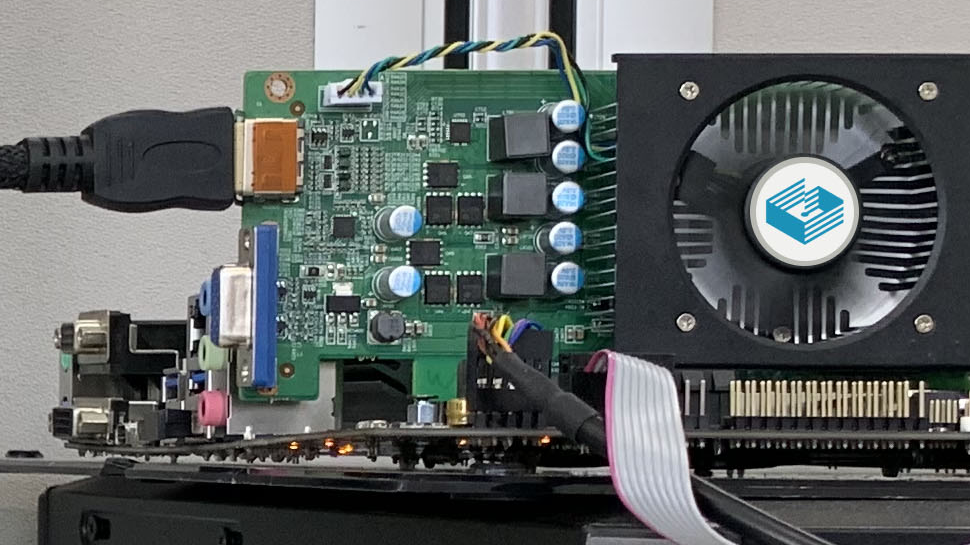First Impressions of China’s Glenfly Arise 1020 GPU Aren’t Great

We've been watching information concerning China’s Glenfly Arise graphics cards emerge for at least the last year. Now, a self-confessed graphics card enthusiast and collector on Twitter has managed to acquire a Glenfly Arise 1020 sample from the PRC. The tests are ongoing, as refreshing Löschzwerg’s Twitter feed rewarded us with some new benchmark results. However, the first card in the west (maybe?) definitely has some issues.
Starting with the good news, there is an enthusiast outside of China testing one of these graphics cards in apps, games, and benchmarks that we are familiar with. That makes it easier to see how it stacks up against existing Nvidia, AMD, and Intel GPUs.
A new toy from PRC has arrived, a Glenfly Arise 1020 graphics card 🤓🤘2GB DDR4 on a 64bit interfance doesn't speak for high performance, but it's going to be fun anyway. PCB dates 2022 week 45.#glenfly #arise #graphicscard #arise1020 pic.twitter.com/fphHKbvLC9June 13, 2023
Löschzwerg shared some artfully taken photos of the simple looking Glenfly Arise 1020 earlier today. It has a sparsely populated PCB, and looks like it could fit with a low-profile bracket. The cooler appears to be a simple model designed for under 50W or so. It has just two connectors: an old VGA monitor connector, and a newer HDMI output.
In other words, it's very much the same card as we reported on this time last year, when images were shared by a Bilibili user based in China. That card looked very much like the reference model pictured above.
Initial testing of the Glenfly Arise 1020 appeared to disappoint Löschzwerg, as simply firing up the GPU-Z tool caused a system freeze. That's not a good start, but then GPU-Z does some low-level hardware accesses and if it tries to pull data from an unknown GPU, strange things can happen. The Project PhysX benchmark also fell flat on its face using this Shanghai Zhaoxin Semiconductor Company produced graphics card.
More luck was had with an old 3DMark graphics benchmarking tool, specifically 3DMark 11. Löschzwerg commented that in successfully running this benchmark, the Glenfly Arise 1020 demonstrated an advantage over the Moore Threads MTT S80.
Glenfly Arise 1020 - 3DMark11 resultsEntry -> E1980Performance -> P1081Extreme -> X275The Arise 1020 has no trouble running the benchmark, compared to the MTT S80, which can't as of now.#glenfly #arise #arise1020 #3dmark11 pic.twitter.com/vFEmarJGJ8June 13, 2023
In 3DMark 11, the Chinese graphics card, which we think uses mid-2000s era S3/Via GPU technology, scored as follows: Entry – E1980, Performance - P1081, and Extreme X275. What can we find for comparable reference points in the history of AMD / ATI / Nvidia graphics cards?
Looking back at a roundup of single-slot graphics cards on Tom’s Hardware dated June 2011, all of the models easily outpaced this Chinese GPU. We are talking about graphics cards such as the AMD Radeon HD 6850, Nvidia GeForce GTS 450, and Nvidia GeForce GT 440. That’s a shame, and to add insult to injury, ancient GPUs like the Radeon HD 7970 and GeForce GTX 680 appear to be about 10X faster than the Glenfly Arise 1020 using 3DMark 11 Extreme scores as a comparison metric.
Looking back at some Bilibili sourced tests, we saw evidence that the Glenfly Arise 1020 was about 60X slower than the relatively modern GeForce GTX 1060 (Geekbench OpenCL). It may not be quite that bad, but it's certainly not going to keep up with the best graphics cards.
Noting the above poor performance in last year’s tests and those by Löschzwerg today, we hope that some driver and OS wrangling could allow the new Chinese graphics card to improve over time. We know that it's pretty limited with its four CUs (256 shaders) mated with 2GB VRAM on a 64-bit bus, but these benchmark results are worse than expected.
Last time we mused whether the delivery of a working or improved quality Windows driver, or testing the Chinese hardware on a Chinese OS like the Tongxin/Galaxy Kirin operating system, would make a difference. However, we don't expect any massive changes in the coming months, especially considering the base hardware specs.
These early results remain interesting to see, and we hope Löschzwerg makes some good progress, alongside tech enthusiasts in China, in trying to demonstrate the full potential of the Glenfly Arise 1020. TL;DR: Making GPUs is hard.
Get Tom's Hardware's best news and in-depth reviews, straight to your inbox.

Mark Tyson is a news editor at Tom's Hardware. He enjoys covering the full breadth of PC tech; from business and semiconductor design to products approaching the edge of reason.